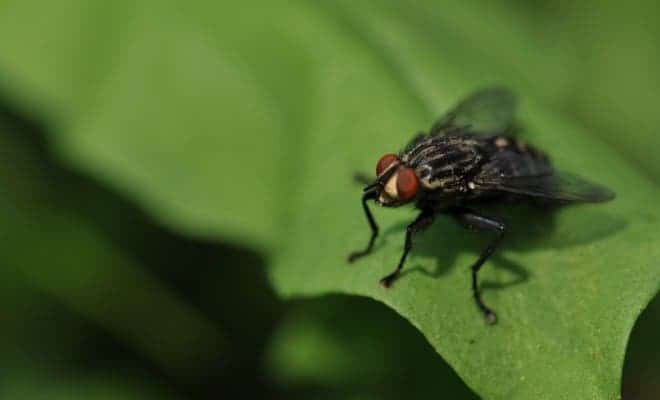Do flies dream of flying sheep? We might soon have the answer to that question, as Northwestern University neuroscientists have developed a method that allows them to pinpoint communicating neurons in a living fly’s brain — effectively paving the way for mind-reading. Their mapping of specific neural connection patterns could provide insight into the computational processes that underlie the workings of the human brain.
Neurons rely on points of communication known as synapses to share information. As crunching sensory data is a collective effort, involving a large number or neurons, synapses are a good indicator of a brain’s processing power — and they’re the focus of Northwestern’s study.
“Much of the brain’s computation happens at the level of synapses, where neurons are talking to each other,” said Marco Gallio, assistant professor of neurobiology in Northwestern’s Weinberg College of Arts and Sciences and lead scientist of the study. “Our technique gives us a window of opportunity to see which synapses were engaged in communication during a particular behavior or sensory experience. It is a unique retrospective label.”
The team chose Drosphila melanogaster (the common fruit fly) for the study, as the insect’s brain and its communication channels are well documented, but they ran into a little problem: it’s impossible to look at a fly’s brain under the microscope as it’s performing any kind of complex activity, so they had to come up with a solution.
Their answer was to use fluorescent molecules to mark neurons, focusing on the neural networks of three of the fly’s sensory systems — smell, sight and themrosensory system.
Starting with the gene for a green fluorescent protein found in jellyfish, they were able to genetically engineer three differently-colored proteins to serve as labels. Then, to make the molecules light up only when synapses started firing, they split the molecules in two and attached one half to the neuron sending and the other to the neuron receiving the information.
As the insect was exposed to sensory triggers or performed an activity, neurons would touch briefly to communicate and the now-whole molecules started lighting up the parts of the fly’s brain that were involved in processing the information or directing movement. Even better, the fluorescent signal persists for hours after the communication event, allowing researchers to study the brain’s activity after the fact, under a microscope.
“Our results show we can detect a specific pattern of activity between neurons in the brain, recording instantaneous exchanges between them as persistent signals that can later be visualized under a microscope,” Gallio said.
By “reading” the brains they could tell if a fly had been in either heat or cold (at least for 10 minutes) an entire hour after the sensory event had happened, for example. They also could see that exposure to the scent of a banana activated neural connections in the olfactory system that were different from those activated when the fly smelled jasmine.
“Different synapses are active during different behaviors, and we can see that in the same animal with our three distinct labels,” said Gallio.
This is the kind of new technology scientists discuss in the context of President Obama’s BRAIN (Brain Research Through Advancing Innovative Neurotechnologies) Initiative, Gallio said. Such a tool will help researchers better understand how brain circuits process information, and this knowledge then can be applied to humans.
Their paper, titled “Dynamic labelling of neural connections in multiple colours by trans-synaptic fluorescence complementation” has been published in the journal Nature Communications.










